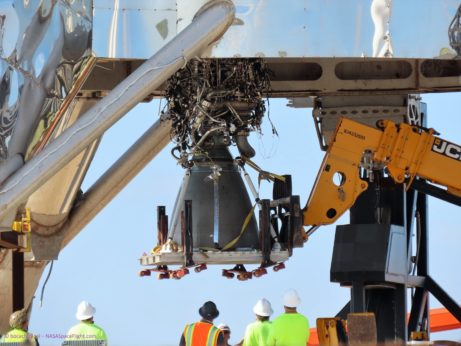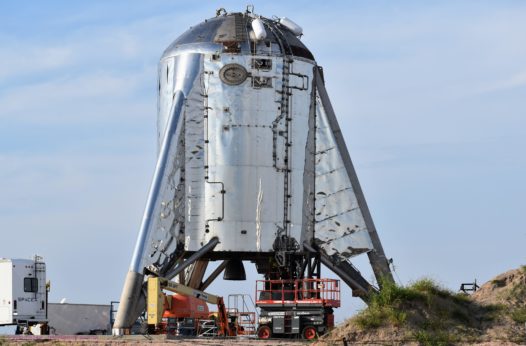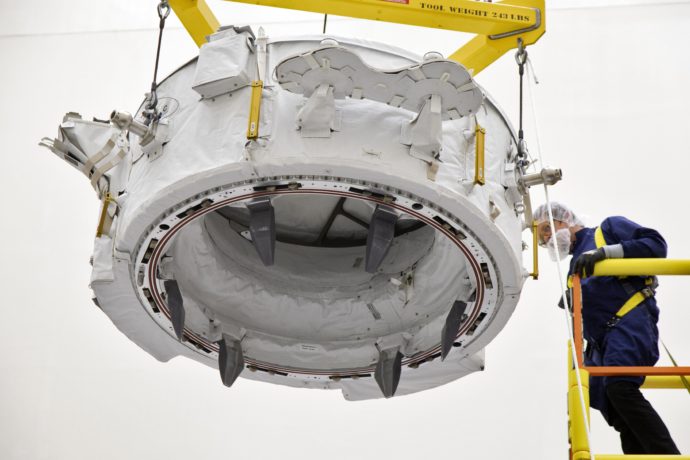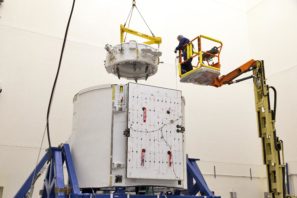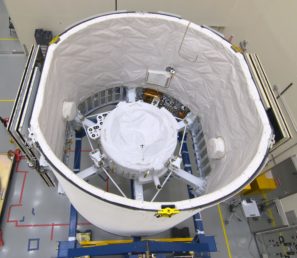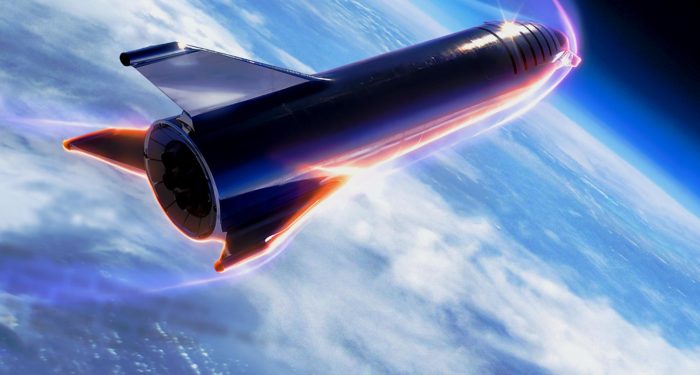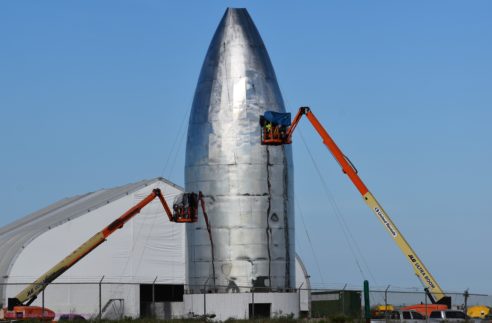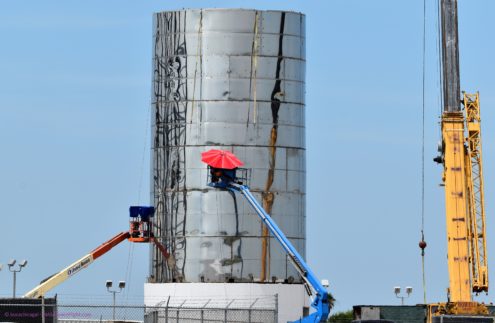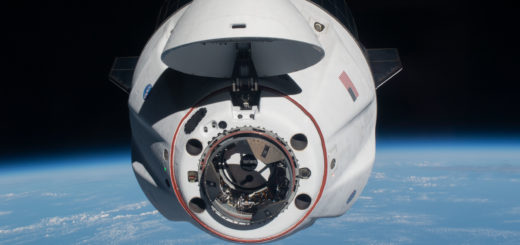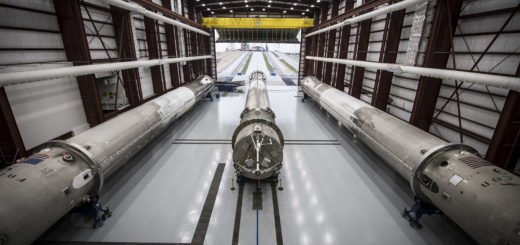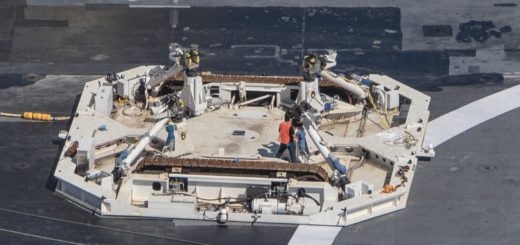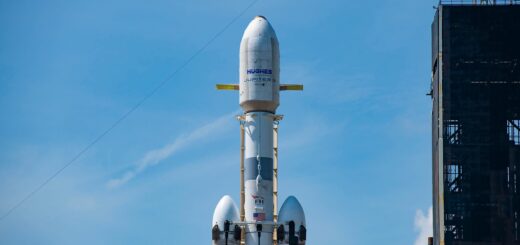Elon Musk’s busy two weeks – first flight of Starhopper, Neuralink announcement, Starship presentation and more

Upcoming events relating to Elon Musk’s companies (UTC times)
Elon Musk has busy two weeks ahead of him. SpaceX is preparing for the first Starhopper flight and two different Falcon 9 launches, Musk’s secretive company Neuralink will make its first public announcement about its progress in the field of neurotechnology, and Tesla will announce its financial results for the record-breaking second quarter. All of this will be followed by Musk’s presentation about the Starship rocket, which has undergone many design changes in recent months, only some which we know about. So let’s take a look at each of the upcoming events in more detail.
Things will kick off on July 15 in Boca Chica, Texas, where SpaceX is preparing for the first flight of Starhopper, a rough demonstrator of some of the technologies being developed for the ambitious Starship rocket system. Starhopper had already been test fired twice in April, but the rocket was tethered to the ground and its Raptor engine was subsequently removed and trucked away.
We have now learned that the reason was an issue with this powerful methane engine. SpaceX has encountered problematic vibrations in the 600 Hz range that had reportedly caused several Raptors to be damaged or destroyed during testing (in one case by a liberated oxygen turbine stator). However, Elon Musk has now announced that the engine’s design had been modified and the vibration problem has been resolved. That was confirmed by Raptor SN06’s successful test firings in McGregor in July. One test lasted 51 seconds while another was reportedly 84 seconds long. As far as Raptor’s throttling ability goes, Musk said that reducing thrust to 40% was risky, so the engine will not throttle below 50% during the upcoming Starhopper flight.
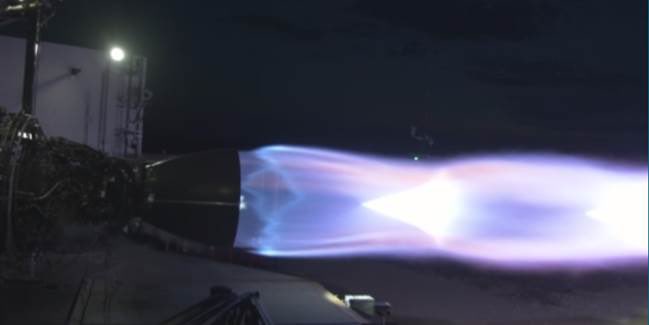
Test firing of Raptor SN06 in McGregor in July 2019 (Credit: Elon Musk)
On July 11, Raptor SN06 was transported to Boca Chica in South Texas where it was quickly mounted on Starhopper which was followed by testing its thrust vector control system (as seen in the video below). Announced airspace closures suggest that on July 15 a static fire, involving a brief ignition of the Raptor on the tethered Starhopper, might take place. If the test goes well, the Starhopper’s first test flight is scheduled for July 16, according to Elon Musk. Coincidentally, or perhaps deliberately, the test falls on the 50th anniversary of Apollo 11’s launch to the Moon.
During the test, Starhopper would fly to an altitude of about 20 meters while diverting horizontally. Then it would either land back on the launch pad or maybe on the newly built landing pad. Elon Musk also suggested that the test flight would be broadcast live. For reference, the launch will probably be very similar to the test flights of Grasshopper, experimental rocket SpaceX used in 2013 to test vertical landings.
But Starhopper’s first flight is not the only event Musk has planned for July 16. On the same day, Falcon 9 static fire before the CRS-18 mission is scheduled to take place in Florida. And the next day, Musk’s secretive company Neuralink will make its first big announcement. The neurotechnology company was founded in July 2016 with the long-term goal of developing a „neural lace“ that would work as a high-bandwidth brain-computer interface. According to Musk, this could be one way for humanity to keep up with the rise of an artificial superintelligence which Musk considers to be inevitable and potentially catastrophic.
It is not clear what exactly will Neuralink announce in San Francisco on Tuesday, but it could be some kind of medical advancement in prosthetics, treating Alzheimer’s or spinal injuries. Another possibility is some kind of advanced brain implant. During an interview last year, Elon Musk said: “I think [Neuralink will] have something interesting to announce in a few months that’s at least an order of magnitude better than anything else, probably better than anyone thinks is possible.” Whatever the announcement is, the good news is that the event will be live-streamed.
The following week will be similarly packed – on July 21, CRS-18 is scheduled to launch. A reused Falcon 9, which previously flew on the CRS-17 mission in May, will send another Dragon supply ship to the ISS. The Dragon spacecraft itself will also be reused, and might even be the first capsule ever to launch for the third time. But we don’t know yet which particular Dragon will be used on this mission. As for cargo, besides the usual crew supplies and science experiments, Dragon will also carry the IDA-3 docking adapter, serving as a replacement for IDA-1, which was destroyed in the CRS-7 accident in 2015. IDA-2 has been launched in 2016 on CRS-9 and was actually used for the first time earlier this year during Crew Dragon’s demonstration mission.
Another event is happening on July 21, the SpaceX Hyperloop Pod Competition, where student teams from all over the world will compete with their Hyperloop pod prototypes onn the Hyperloop test track in Hawthorne, California. This will be the fourth such competition since January 2017.
On July 24, Tesla plans to release its financial results for the second quarter. Musk’s automaker had a record quarter in terms of electric vehicles sold, but it is unclear whether this will be enough to reach profitability again (some expect a slight loss). In this year’s first quarter, Tesla reported $702 million loss which led to concerns about demand reaching its peak and caused a big drop in stock price. However, the current record-breaking quarter showed that demand is not a problem for Tesla yet and stock price partially recovered.
As usual, the announcement of the financial results will be followed by a conference call, during which Tesla management led by Elon Musk will answer questions from financial analysts and shareholders, so we can count on hearing some news. A big topic will certainly be the fact that the Chinese Gigafactory 3 should be ready soon to start producing Model 3s. Tooling and other equipment is already being installed inside the enormous factory, as shown by the latest drone fly-over.
Then, sometime in late July, Elon Musk could give a presentation about SpaceX’s updated vision for Starship and Super Heavy. This rocket system has undergone significant changes in the last 9 months when the company shifted from carbon composites to stainless steel as the main material used for Starship’s construction. Additionally, the plans for the Raptor engine have changed – different number of engines will be used on the spaceship and there will be at least two engine variants instead of one, as was announced last year during the dearMoon event.
On top of that, Starship will probably have a different shape due to redesigned wings, flaps and legs. Elon Musk also talked about Starship’s payload capacity that takes into account the design changes made in the last several months. He said Starship would be able to deliver “100 to 125 [metric tons] of true useful load to useful [low Earth] orbit (eg Starlink mission), including propellant reserves. 150 tons for reference payload compared to other rockets.” In the case of launching to a standard geostationary transfer orbit with 27° inclination, the payload would drop to 30 to 40 metric tons. However, all these values are for a “fully reusable config” and would actually be “about double in fully expendable config, which is hopefully never”.
Musk’s recent tweets suggest that the upcoming Starship presentation is likely to take place in Boca Chica where Starhopper is being tested and also the construction of the first Starship prototype continues. This “orbital” prototype will be initially equipped with three Raptors and, according to Musk, could fly to an altitude of 20 kilometers in just a few months. The presentation will also be broadcast live. However, Musk said that it will happen only after Starhopper conducts a successful test flight.
And that’s not all, the launch of Amos-17 is planned for early August, which means that another Falcon 9 static fire could take place by the end of July. It might actually be conducted very shortly after the CRS-18 launch. As you can see, Elon Musk doesn’t rest on his laurels and keeps his various teams busy with ambitious milestones. Which event are you looking forward to the most?
Note: The dates may still change, so I recommend that you keep an eye on ElonX’s always-up-to-date calendar in the sidebar.



